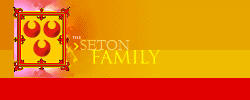|
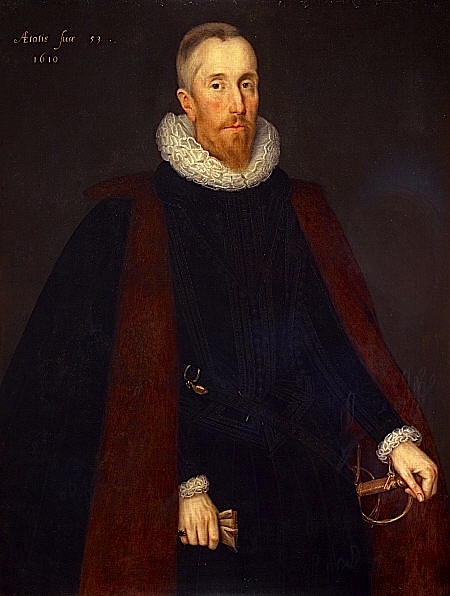
Alexander Seton, Chancellor of Scotland and 1st
Earl of Dunfermline, Lord Fyvie and Lord Urquhart, Baron of Fyvie and Pinkie, Pluscarden,
etc.
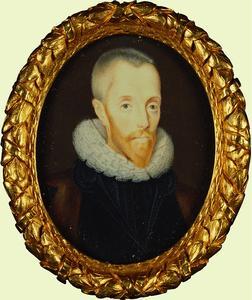 He
was the fourth son of George, the
seventh Lord Seton, the ‘defender of the beauteous Stewart’, and his maternal
grandfather was
William Hamilton of Sanquhar and Sorn, High Treasurer of Scotland and Captain of
Edinburgh Castle.
Alexander was born before the Reformation, and was the godchild of Queen
Mary and a personal favourite of hers from the Seton Household. From his godmother he
received, as ‘ane Godbairne gift,’ the lands of Pluscarden, in Moray. On Prior Alexander Stewart's death in 1560, Mary Queen of Scots granted
Pluscarden Priory and its remaining lands to Alexander Seton, giving him the
title of Baron of Pluscarden. In 1587 this religious appointment was translated
into a temporal Lordship, although significantly the head of the Seton family
retained the legal title of Prior, ensuring that the continuity of the title was
recognised in Scots law. He
was the fourth son of George, the
seventh Lord Seton, the ‘defender of the beauteous Stewart’, and his maternal
grandfather was
William Hamilton of Sanquhar and Sorn, High Treasurer of Scotland and Captain of
Edinburgh Castle.
Alexander was born before the Reformation, and was the godchild of Queen
Mary and a personal favourite of hers from the Seton Household. From his godmother he
received, as ‘ane Godbairne gift,’ the lands of Pluscarden, in Moray. On Prior Alexander Stewart's death in 1560, Mary Queen of Scots granted
Pluscarden Priory and its remaining lands to Alexander Seton, giving him the
title of Baron of Pluscarden. In 1587 this religious appointment was translated
into a temporal Lordship, although significantly the head of the Seton family
retained the legal title of Prior, ensuring that the continuity of the title was
recognised in Scots law.
‘Finding
him of a great spirit,’ his father sent him to Rome at an early age, financed by
his temporal Lordship, and he
studied for some time in the Jesuits’ College with the view of entering the
priesthood. It seems probable that he did take holy orders, and it was thought
that if he had remained at Rome he would have been made a cardinal.
His first official residence after the
family Palace of Seton, was the Abbott's House at Dunfermline, followed by that
at Pluscarden, St. Benedict's House, named as such for the patron saint of the
Seton's so named in the old 'war cry', "St. Bennet's and Set On" (vulgo-Scots).
The Seton family were long associated with the Benedictine Monks, who had
themselves had a long association with the Knights Templar in Scotland, of which
the Seton's were prominent. The Benedictine Priory of Urquharts'
association with Pluscarden, which originated when the two Priories' were united
by the Pope in the mid-15th century, was the basis for the Title for Alexander
Seton when he later became a Lord of Session as Lord Urquhart. It was from
this period that he acquired the lands of Dalgety and Danduff in Fife as a
private country-lodge, with it's modest but attractive Chapel, St. Bridgets
Kirk, to which he spent significant sums rebuilding and extending into what
would be the later burial place for his progenity.
The
overthrow of the Roman Catholic Church in Scotland probably induced young Seton,
as his biographer conjectures, to abandon his ecclesiastical pursuits, and to
betake himself to the study of the civil and the canon law; and he passed as an
advocate before James VI. and the Senators of the College of Justice in the
Chapel Royal at Holyrood in 1577. He survived the union of the Crowns
(1555—1622), and was highly involved in the legal proceedings that paved the way
for King James VI to become King James I of England, uniting the two Crowns
which ultimately united the two countries into that of Great Britain.
The Setons had hitherto been more
distinguished in warlike than in civil pursuits, but in the course of the
sixteenth and seventeenth centuries no less than six members of the family
obtained seats on the Scottish Bench. Alexander Seton, the most illustrious of
these legal luminaries, was created an Extraordinary Lord of Session in 1586,
obtaining in the following year a gift of the revenues of Urquhart and of the
Priory of Pluscarden. With all their attachment to the old Church, the Setons,
like the rest of the Scottish nobility of that day, seem to have been by no
means unwilling to share in its spoils.
Two years later Alexander Seton became
an Ordinary Lord of Session under the title of Lord Urquhart, and in 1593 he was
elected by his brethren to the president’s chair at the comparatively early age
of thirty-eight. He was appointed one of the Octavians—a committee of eight
persons to whom the King, in 1596, entrusted the management of public affairs,
and who introduced a number of important administrative reforms, though they
were regarded with great suspicion and distrust by the clergy. These councillors,
indeed, were so unpopular that to satisfy the fears of the Presbyterian party,
James promised that he would not meet them in Council, ‘at least when the cause
of religion and matters of the Church were treated.’
The Court of
Session had long been in bad odour in Scotland, on account of its subserviency
to the Court and its partial and unjust judgments. It is therefore with a
feeling of agreeable surprise that we learn that, though Seton was a favourite
with the King, he had the courage to resist and defeat a characteristic attempt
of James to induce the Court to decide unjustly in his favour against a claim of
the celebrated Robert Bruce, the successor of Andrew Melville, as the leader of
the Presbyterian Church. Bruce had been most unjustly deprived of his stipend by
the King, and he sued the Crown in the Court of Session for redress. James
pleaded his own cause, and commanded the senators to pronounce judgment in his
favour.
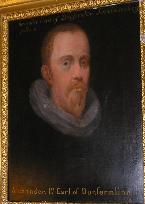 Seton, with great dignity and firmness, informed the King that though
they were ready to serve him with their lives and substance, ‘this is a matter
of law, in which we are sworn to do justice according to our conscience and the
statutes of the realm.’ ‘Your majesty,’ he added, ‘may indeed command us to the
contrary, in which case I and every honest man on this bench will either vote
according to conscience, or resign and not vote at all.’ The judges, with only
two dissentient voices, pronounced their decision in favour of Mr. Robert Bruce,
and the mortified monarch ‘flung out of court, muttering revenge and raging
marvellously.’ As Mr. Tytler justly observes, ‘When the subservient temper of
the times is considered, and we remember that Seton, the president, was a Roman
Catholic, whilst Bruce, in whose favour he and his brethren decided,
was a chief leader of the Presbyterian ministers, it would be unjust to withhold
our admiration from a judge and a Court which had the courage thus fearlessly to
assert the supremacy of the law.’ Seton, with great dignity and firmness, informed the King that though
they were ready to serve him with their lives and substance, ‘this is a matter
of law, in which we are sworn to do justice according to our conscience and the
statutes of the realm.’ ‘Your majesty,’ he added, ‘may indeed command us to the
contrary, in which case I and every honest man on this bench will either vote
according to conscience, or resign and not vote at all.’ The judges, with only
two dissentient voices, pronounced their decision in favour of Mr. Robert Bruce,
and the mortified monarch ‘flung out of court, muttering revenge and raging
marvellously.’ As Mr. Tytler justly observes, ‘When the subservient temper of
the times is considered, and we remember that Seton, the president, was a Roman
Catholic, whilst Bruce, in whose favour he and his brethren decided,
was a chief leader of the Presbyterian ministers, it would be unjust to withhold
our admiration from a judge and a Court which had the courage thus fearlessly to
assert the supremacy of the law.’
The anger and
disappointment of the King were not lasting, for Seton still continued to enjoy
the royal favour, and to receive a succession of honours and appointments. But,
notwithstanding, he firmly opposed, in 1600, the foolish and dangerous proposal
of the King in the Convention of Estates to raise an army to be in readiness, on
the death of Queen Elizabeth, to secure for him the succession to the English
throne. The scheme was supported by the majority of the higher nobility and
prelates, but was stoutly and successfully resisted by the barons and the
burghs, led by Seton and the young Earl of Gowrie. ‘Notwithstanding the
undisguised mortification of the King, the result occasioned all but universal
satisfaction throughout the country.’
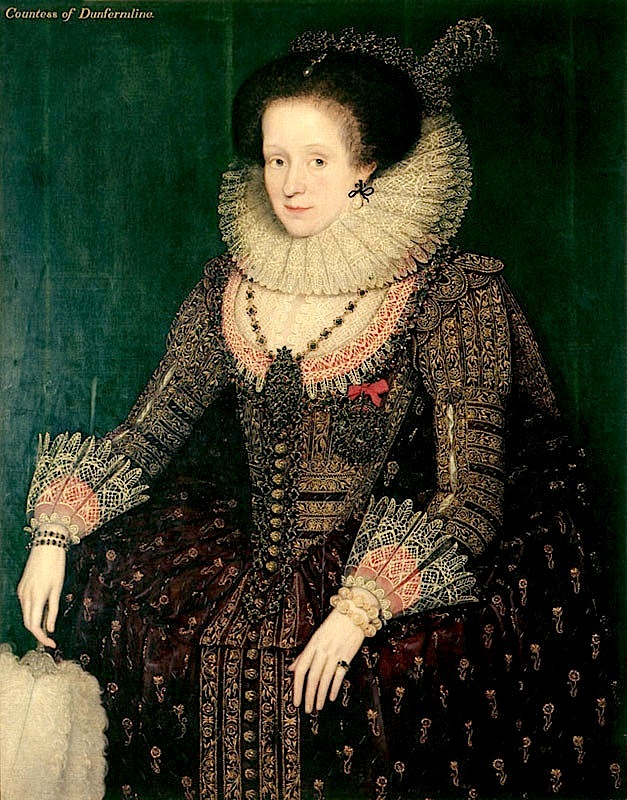 Alexander Seton acquired the lands of
Pinkie shortly after his ascension to the Presidency of the Court of Session and
began the rebuilding of the old house, or hospital of Pinkie, which had been in
a state of ruin after the Battle of the same name in 1547. His work at
Pinkie remains to this day, one of the few untouched examples of his work and of
the architecture and design of the late 16th century. While Pinkie was
transformed into a magnificent residence in it's own right, and the young Prince
Charles (later King Charles I) spent much of his early childhood at Pinkie
House, it was not the pinnacle of Seton's architectural pursuits by any means.
Through the influence of the family cadets in Aberdeenshire, the Seton's of
Meldrum, he acquired the dilapidated castle of Fyvie, with it's barony and vast
estate. His work
there transformed a fortified castellan building into a that of a French
Chateaux, which remains to this day as one of the most spectacular examples of
Scots Baronial design. Alexander Seton acquired the lands of
Pinkie shortly after his ascension to the Presidency of the Court of Session and
began the rebuilding of the old house, or hospital of Pinkie, which had been in
a state of ruin after the Battle of the same name in 1547. His work at
Pinkie remains to this day, one of the few untouched examples of his work and of
the architecture and design of the late 16th century. While Pinkie was
transformed into a magnificent residence in it's own right, and the young Prince
Charles (later King Charles I) spent much of his early childhood at Pinkie
House, it was not the pinnacle of Seton's architectural pursuits by any means.
Through the influence of the family cadets in Aberdeenshire, the Seton's of
Meldrum, he acquired the dilapidated castle of Fyvie, with it's barony and vast
estate. His work
there transformed a fortified castellan building into a that of a French
Chateaux, which remains to this day as one of the most spectacular examples of
Scots Baronial design.
In 1598, as President
of the Lords of Session, he obtained the
erection of the barony of Fyvie into a free lordship, with the dignity of a Lord
of Parliament, and was created Lord Fyvie for he and heirs in perpetuity.
After the successful negotiations with the Lords in England to which Lord Fyvie
laboured endlessly, on the accession of James to the English throne in 1603, Lord Fyvie was
entrusted with the guardianship and tutelage of Prince Charles, the King’s younger son
who later became King Charles I. In
the following year he was summoned to London, along with the Earl of Montrose,
to take part in the negotiations for a union of the two kingdoms, but though the
King himself eagerly pressed the measure, and was zealously supported by Lord
Bacon, it was found to be premature, and had to be postponed for a century but
which foundation was laid by Alexander Seton.
However, while in England Montrose was persuaded to resign the office of Chancellor,
to which King James conferred upon Seton.
In 1605 Lord
Fyvie was advanced to the dignity of Earl of Dunfermline, his brother Robert
having succeeded their illustrious father, the famed George 7th Lord to become 8th Lord Seton, was created 1st Earl of
Winton in 1600 also by King James VI. Alexander's long enjoyment of
the royal favour, and the good fortune which it had brought him, had no doubt
excited the envy and jealousy of some of the courtiers, and an intrigue seems to
have been tried at this time to bring about his dismissal from the
Chancellorship. But ‘pairtly by his friends at home and pairtly by the Queen and
English secretaries moyen, he was suffered to enjoy still his office.’
He
continued to possess the confidence of the King and of Sir Robert Cecil, and
took an active part in carrying on the government in Scotland, and in promoting
the restoration of Episcopacy. In addition to his judicial office the Earl was
for ten years Provost of Edinburgh—a position which had been previously held by
his father. In those days the provostship of the capital was an office of great
influence as well as dignity, and was an object of ambition to the most powerful
nobles. The Chancellor survived till 1622, retaining
to the last the confidence of his sovereign and of his colleagues in the
administration. What is more rare, and is a stronger testimony to his
moderation, sound judgment, and upright conduct, he commanded the respect both
of Episcopalians and Presbyterians, though bitterly hostile to each other.
Spottiswood and Calderwood, though they both suspected him of Popish leanings,
concurred in their testimony to the impartiality of his administration.
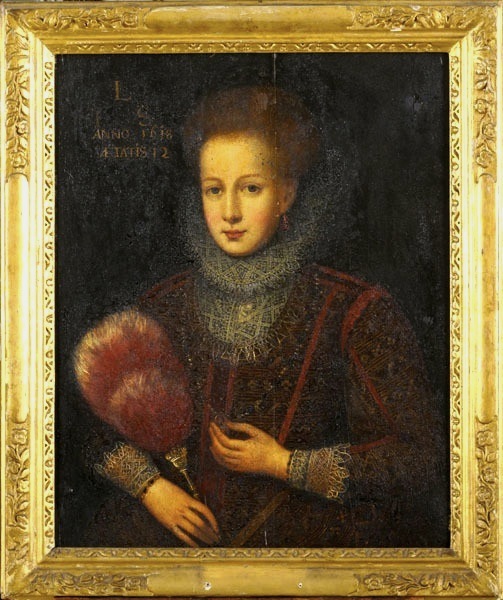 Lord Dunfermline, besides being a ‘learned lawyer, was a
highly accomplished scholar. Lord
Kingston says, ‘He was great in esteem at Rome for his learning, being a great humourist in prose and poesy, Greek and Latine;
well versed in the mathematics, and had great skill in architecture and
herauldry.’ He appears to have been also the friend of men of learning and
science. Robert Terot dedicated to him his curious tract on the ‘Right Reckoning
of Years,’ written to prepare for the introduction of the new style in 1600; and
the illustrious Napier of Merchiston, his treatise on ‘Tabulation by Rods,’
which are still used, under the name of ‘Napier’s bones.’ Two of Seton’s Latin
epigrams, prefixed to Bishop Lesley’s ‘History of Scotland,’ are regarded as
specimens of elegant scholarship, and so is his epigram to Sir John Skene on the
publication of his treatise, known as ‘Regiam Magistatem.’ Lord Dunfermline, besides being a ‘learned lawyer, was a
highly accomplished scholar. Lord
Kingston says, ‘He was great in esteem at Rome for his learning, being a great humourist in prose and poesy, Greek and Latine;
well versed in the mathematics, and had great skill in architecture and
herauldry.’ He appears to have been also the friend of men of learning and
science. Robert Terot dedicated to him his curious tract on the ‘Right Reckoning
of Years,’ written to prepare for the introduction of the new style in 1600; and
the illustrious Napier of Merchiston, his treatise on ‘Tabulation by Rods,’
which are still used, under the name of ‘Napier’s bones.’ Two of Seton’s Latin
epigrams, prefixed to Bishop Lesley’s ‘History of Scotland,’ are regarded as
specimens of elegant scholarship, and so is his epigram to Sir John Skene on the
publication of his treatise, known as ‘Regiam Magistatem.’
That the commendation
bestowed upon Seton’s skill in architecture was well merited is proved by the
stately and beautiful Castle of Fyvie, which he built for himself, and by the
additions which he made to his fine mansion of Pinkie, near Musselburgh, where
he died. The Seton family, indeed, were noted for their munificent architectural
taste, as was shown in Seton church, and in that last ‘peculiar and beautiful
structure,’ Winton House, long the residence of the late venerable Lady Ruthven
and now in the possession of the Ogilvy family.
On 6 April 1611 Seton got a charter of novodamus of the lands and Baronies of Urquhart and Fyvie, the lands of Dalgety
and Danduff, which were all incorporated into the Earldom of Dunfermline and
lordships of Urquhart and Fyvie, which consolidated his estate for the
inheritance of his son, Charles, later 2nd Earl of Dunfermline who succeeded his
father in 1622.
Lord Chancellor
Dunfermline was frequently accused of a leaning to Romanism, and Tytler terms
him a Roman Catholic, in which religion he remained loyal until his death.
After a spectacular funeral procession, long noted in Scottish history and the
poem, 'Tears for the Death of the Earl of Dunfermline, Chancellor of Scotland',
he was buried in a vault under the old church of Dalgety,
in Fife, after a sermon by Archbishop Spottiswood, where his two previous wives
who had predeceased him had also been buried, and where also later was buried
his 3rd wife, Margaret Hay, Countess of Dunfermline and mother of Charles Seton,
2nd Earl of Dunfermline.
Advocate George Seton of Cariston’s summary of the
character and qualifications of Lord Dunfermline is not much, if anything,
heightened: ‘An able lawyer, an impartial judge, a sagacious statesman, a
consistent patriot, an accomplished scholar, a discerning patron of literature,
a munificent builder, a skilful herald, and an ardent lover of archery and other
manly sports.’
|
